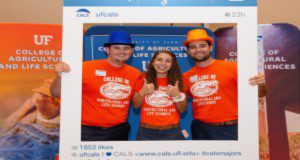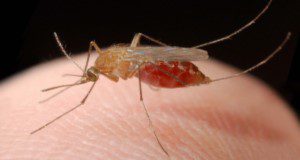This new 6-page publication of the Department of Agricultural Education and Communication focuses on developing social media plans. The intended audience is individuals (e.g., scientists wishing to share their research), organizations, or people who work on grant-funded research projects. In this article, we provide evidence-based strategies for designing, developing, and implementing social media plans to share science research with others inside and outside of the professional scientific community. While the design, development, and implementation of social media may vary, we provide general strategies that are applicable across contexts. Written by Lisa Lundgren, Kathryn A. Stofer, Kirsten Hecht, and Tyus D. Williams.
https://edis.ifas.ufl.edu/wc362
Tag: social media
Using Social Media to Engage Communities with Research: Basics
This new 7-page publication of the Department of Agricultural Education and Communication defines social media, presents reasons for using it to share science, and identifies multiple platforms available for use now. We provide an introduction to and overview for a series on getting the most out of social media for sharing science or STEM, including agricultural research. Our primary goal is to assist people working through social media to broaden the community engaged with research. The series includes additional publications on social media planning, evaluating social media engagement, and social media for branding, among other topics. Written by Kathryn A. Stofer, Lisa Lundgren, Kirsten Hecht, and Tyus D. Williams.
https://edis.ifas.ufl.edu/wc361
Using Social Media to Communicate in an Emergency Situation
The Prevent & Protect publication series focuses on the creation of different material formats to resonate with various audiences and ways to maximize their efficacy in communicating risk to the public about mosquito control. This new 4-page publication of the UF/IFAS Department of Agricultural Education and Communication explains how to engage in effective crisis communication and how to effectively use the Prevent & Protect emergency toolkit in a mosquito-related crisis situation. Written by Ashley Mcleod-Morin, Ricky Telg, Phillip Stokes, Alena Poulin, Shelli Rampold, Angela B. Lindsey, and Sandra Anderson.
https://edis.ifas.ufl.edu/wc363
Getting the Most out of Social Media

Agriculturalists can use social media as a powerful tool for marketing their products and establishing a brand identity. The goal of this series is to help agriculturalists understand how social media can work for them. The series also discusses the various social media platforms and how to use social media strategically and wisely. Written by Jessica C. Fernandez and Joy N. Rumble, and published by the UF Department of Agricultural Education and Communication, August 2015. (Photo credit: tanuha2001/iStock/Thinkstock.com)
http://edis.ifas.ufl.edu/topic_series_getting_the_most_out_of_social_media
Storytelling through Social Media
You and organization can use social media to tell you story and reach a large and diverse audience. This 3-page factsheet covers the major social media platforms, what each platform offers, and how to use theme effectively. Written by Brandon Telg, Jaron Jones, Ricky Telg, and Becky Raulerson, and published by the UF Department of Agricultural Education and Communication Department, July 2015.
http://edis.ifas.ufl.edu/wc218



